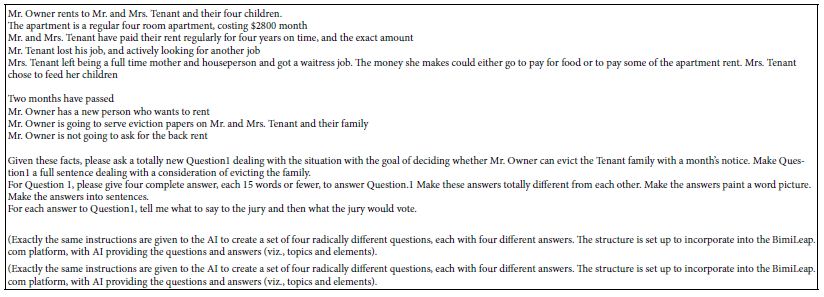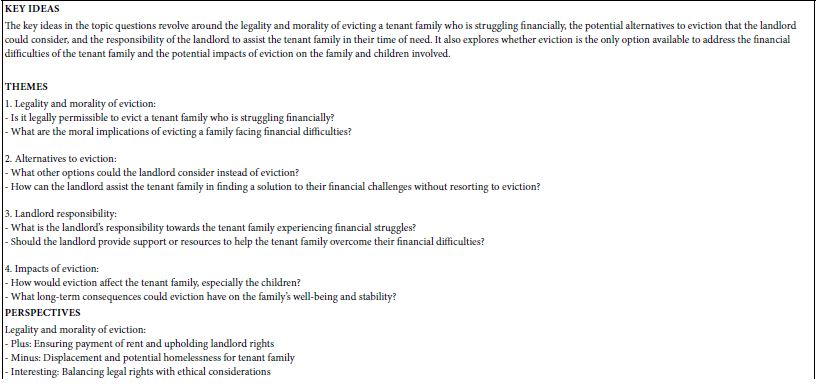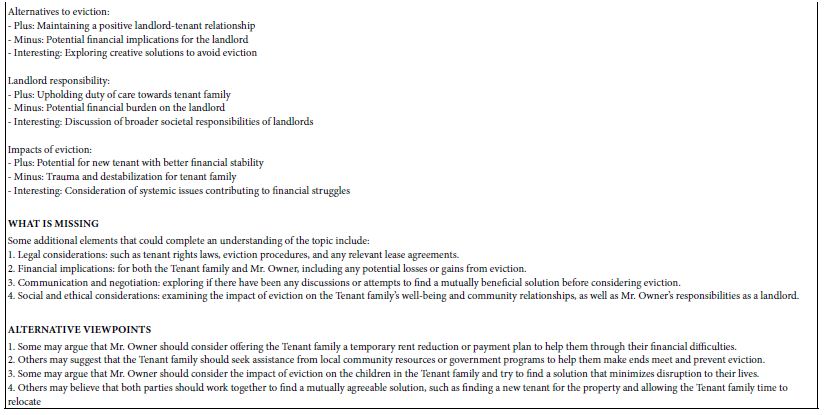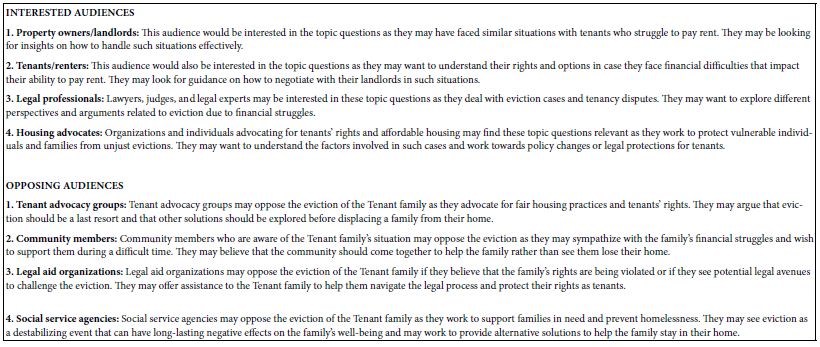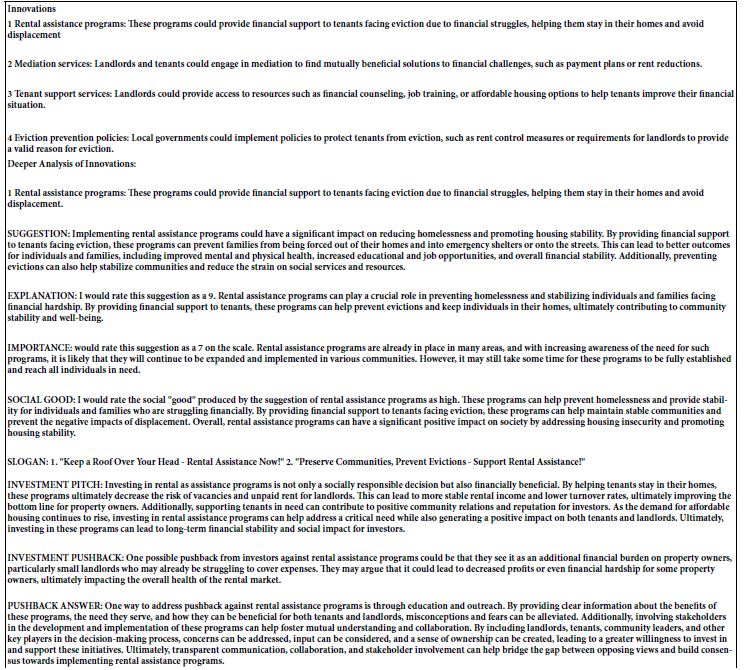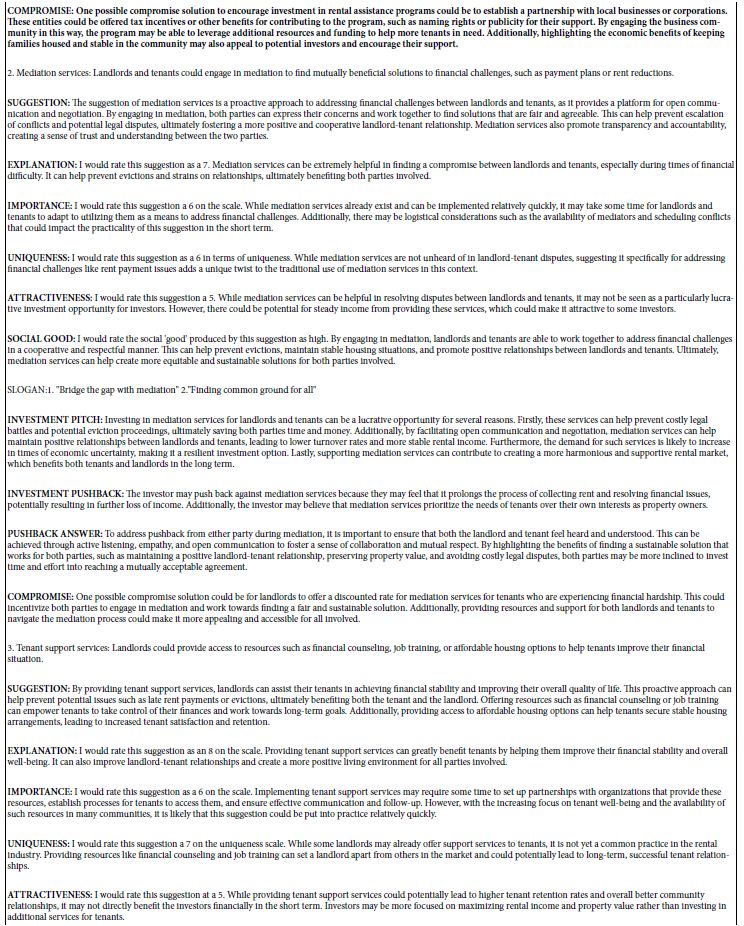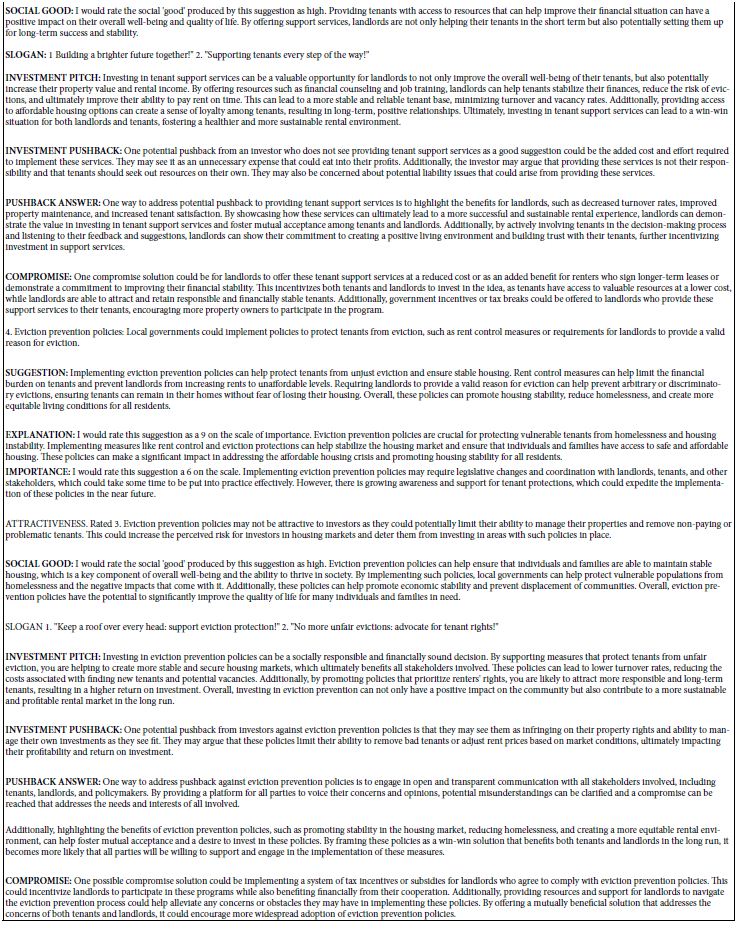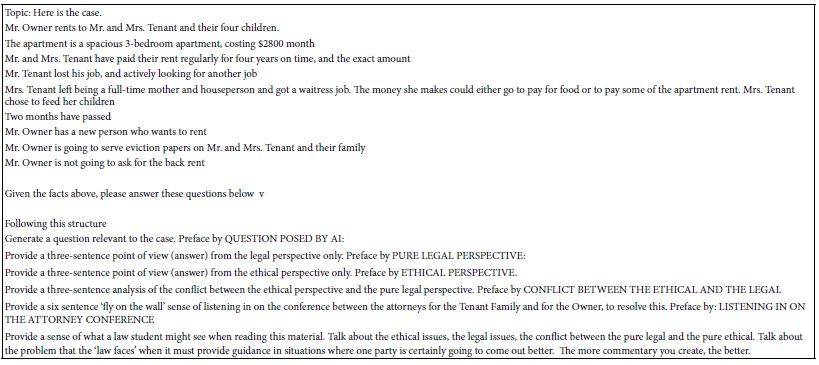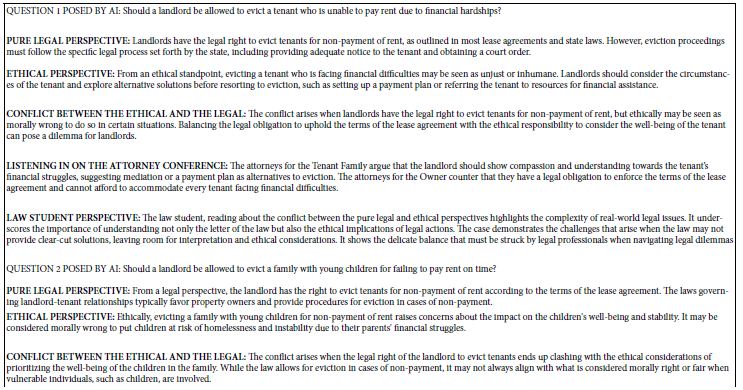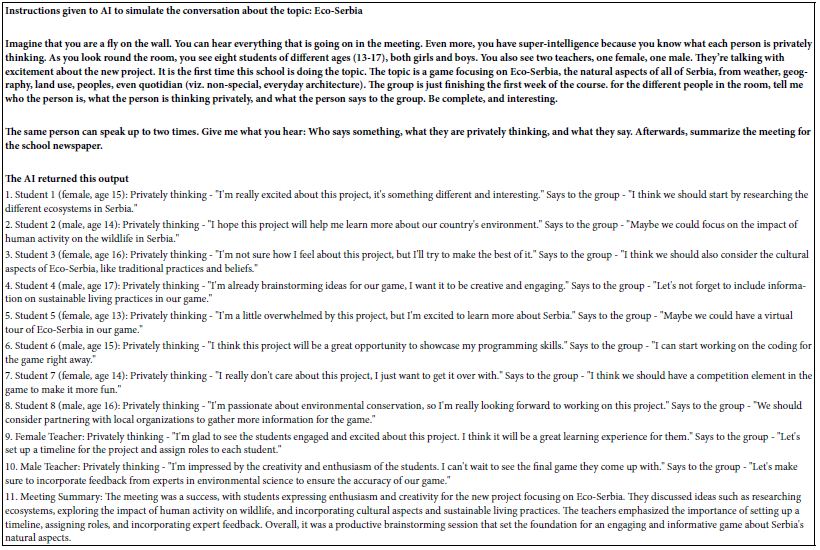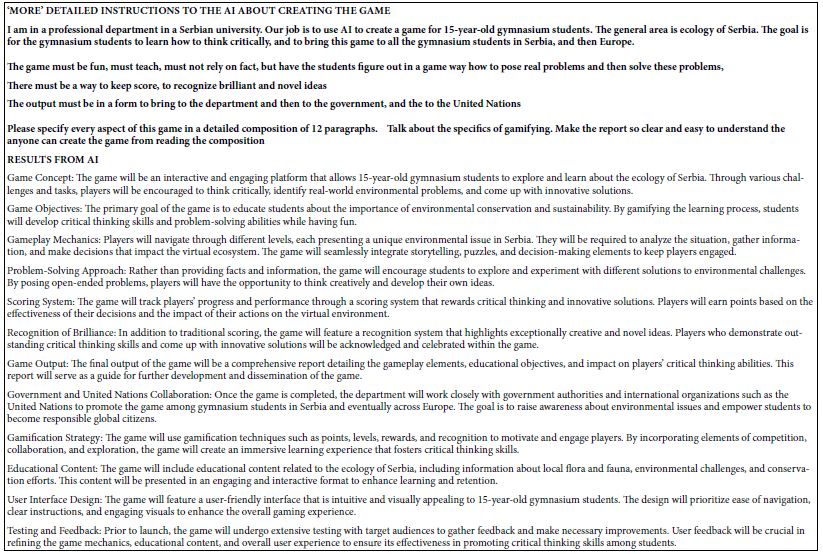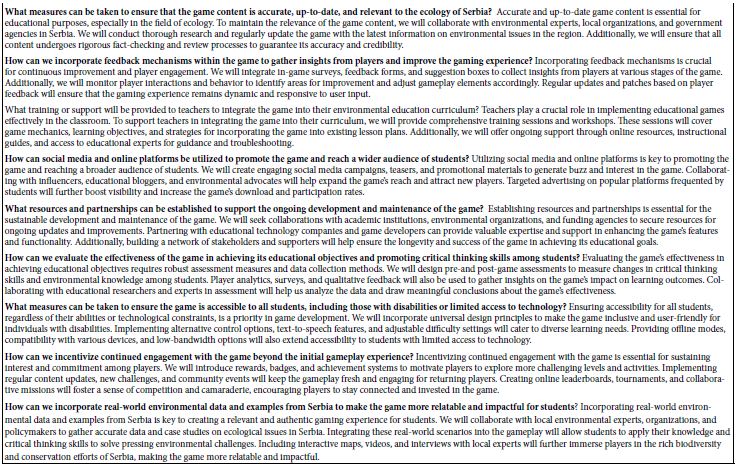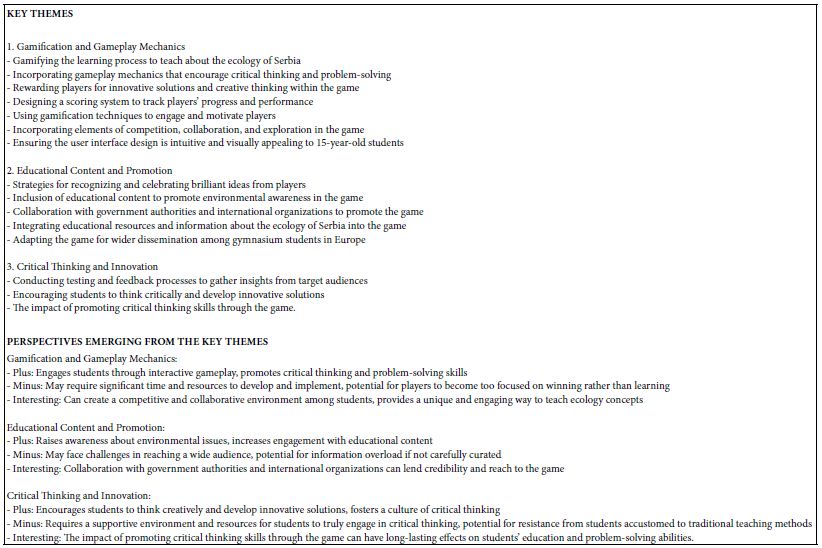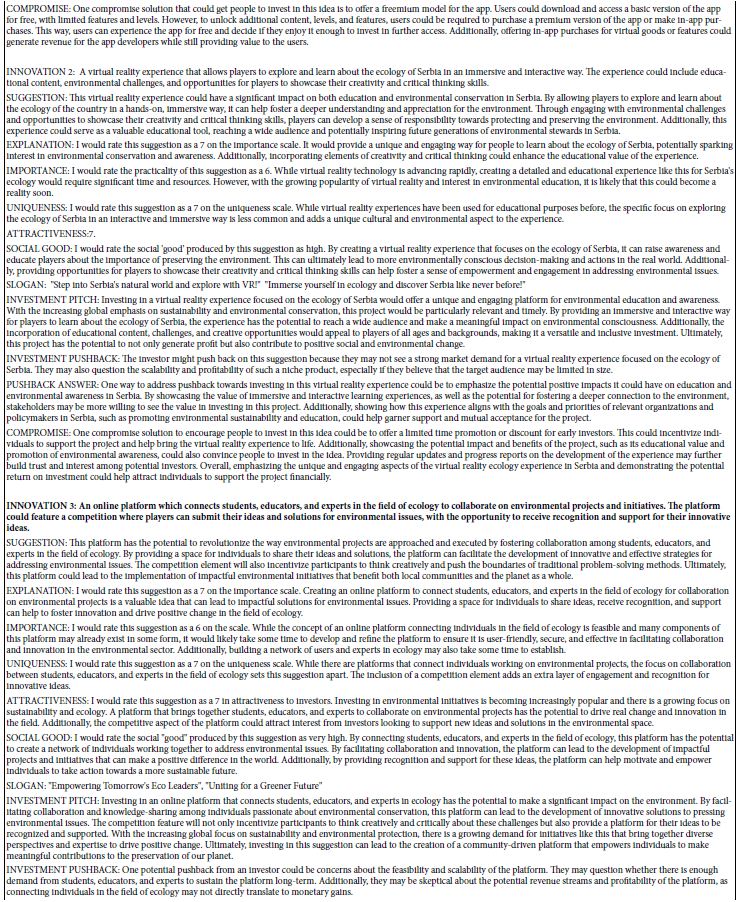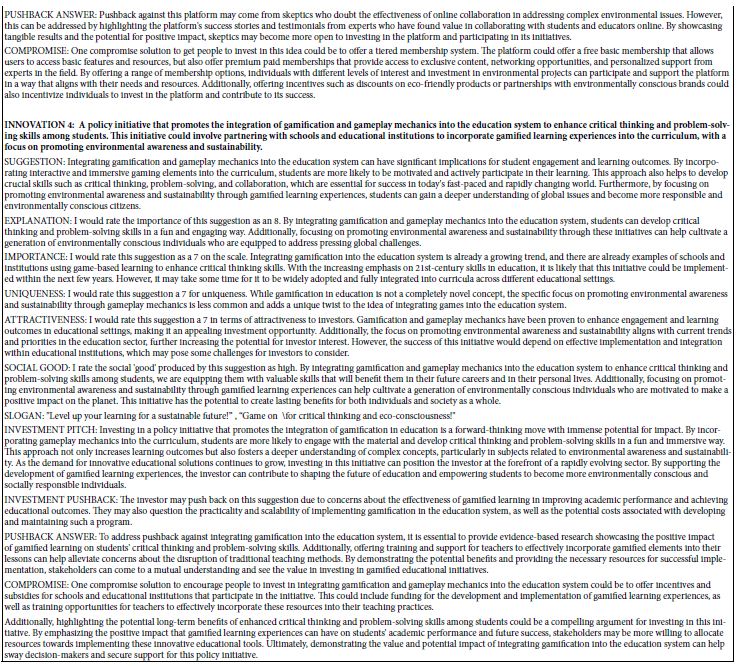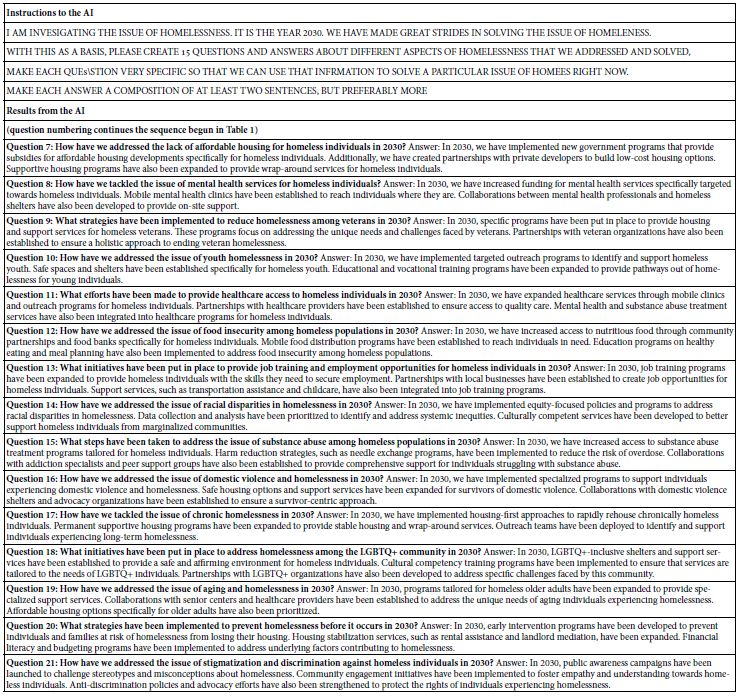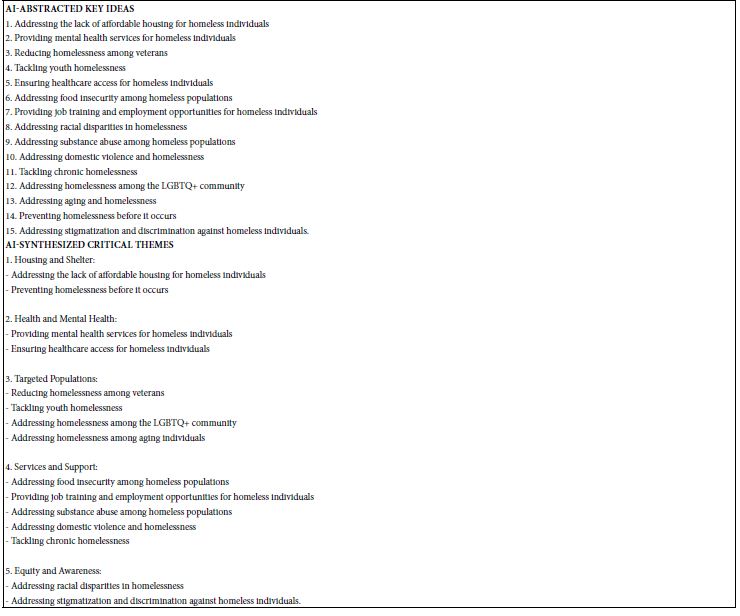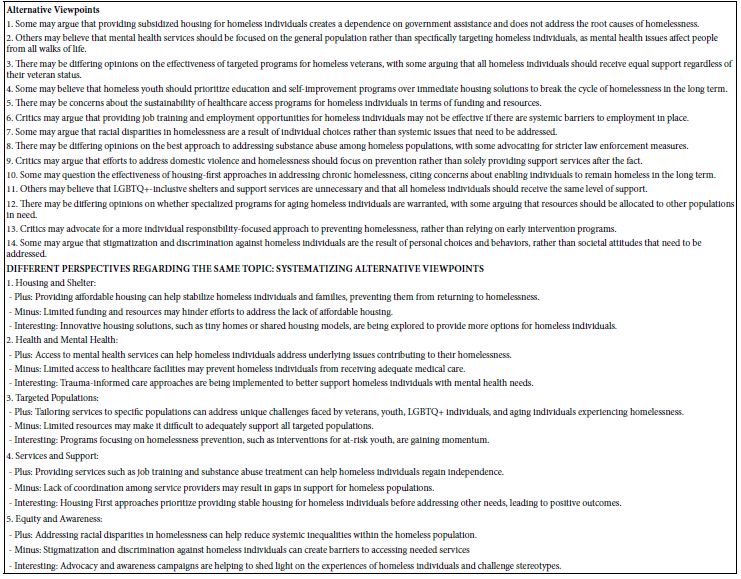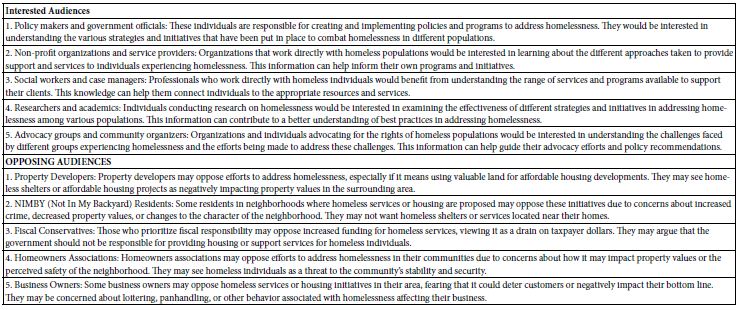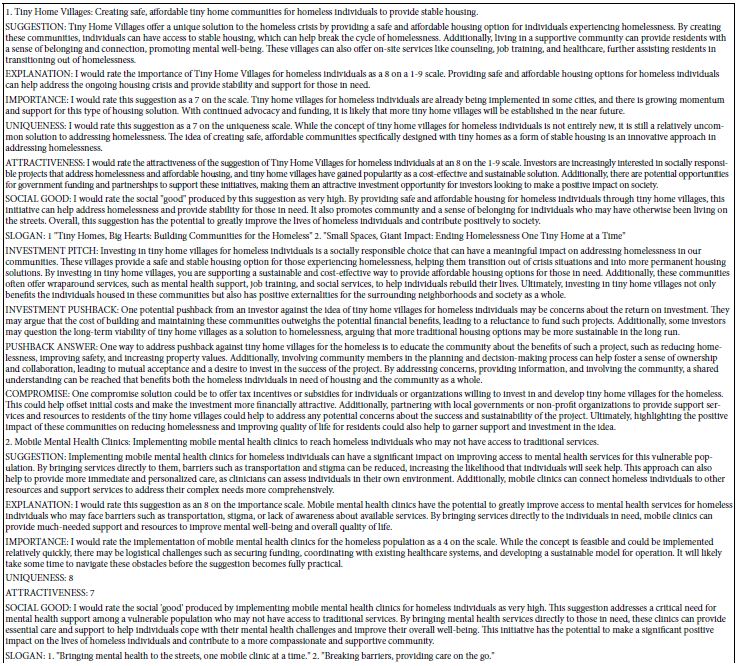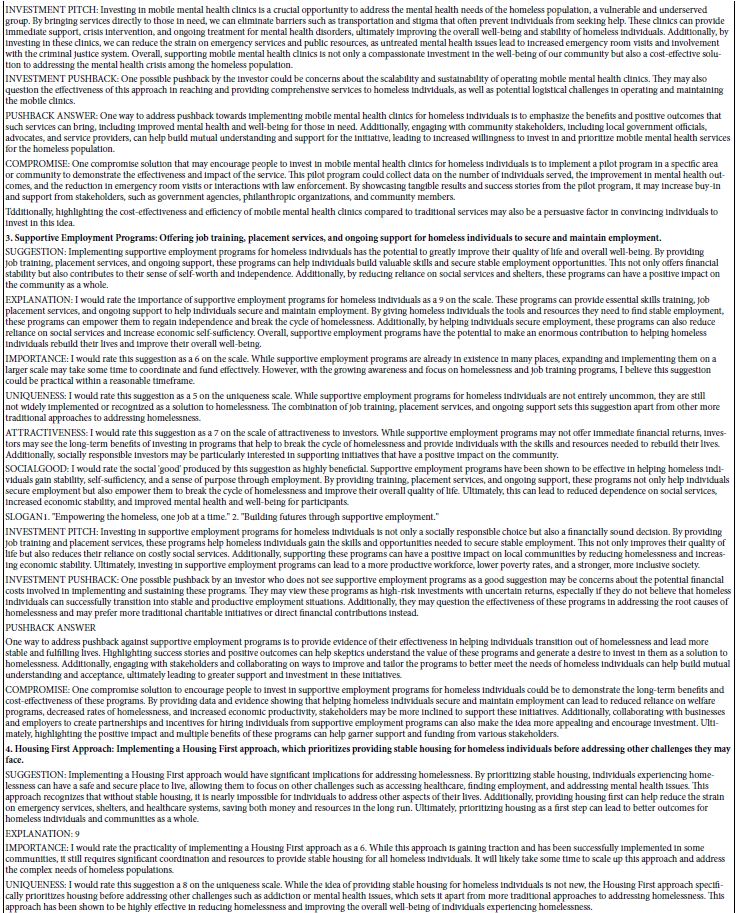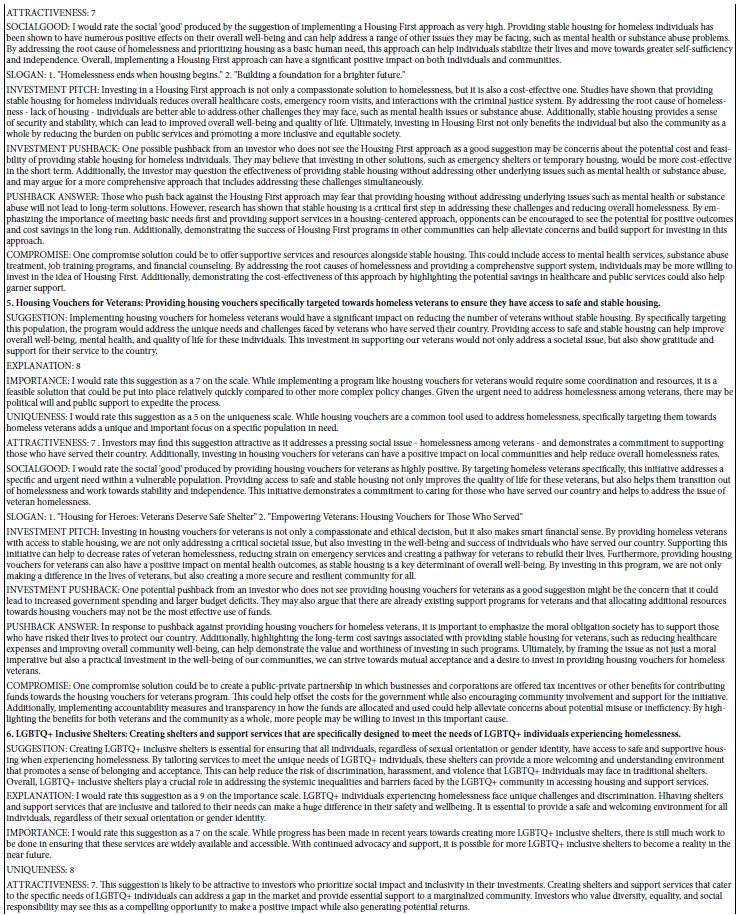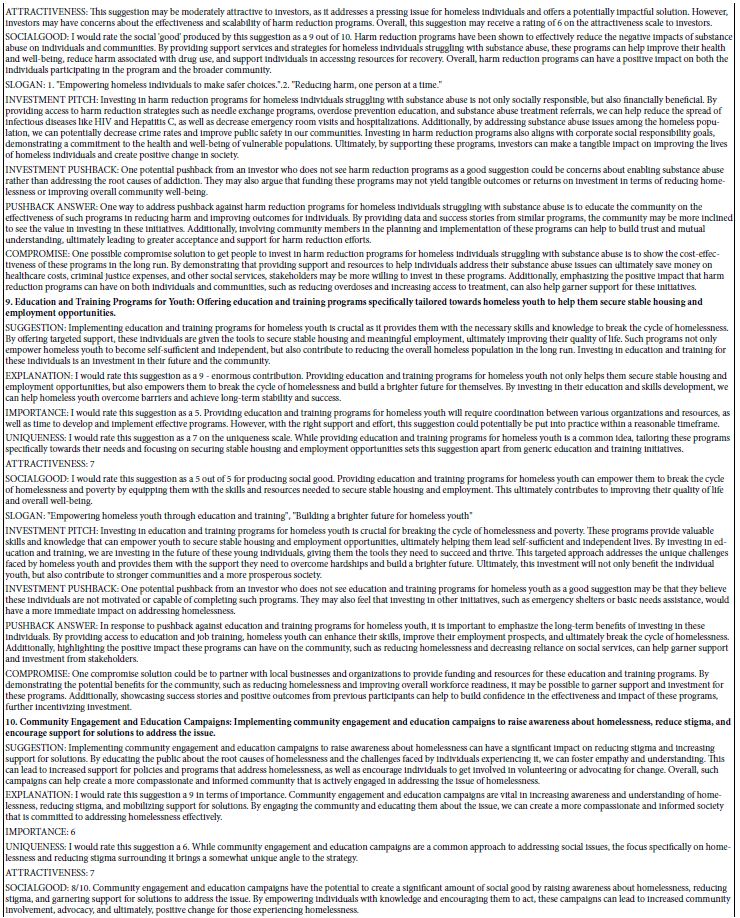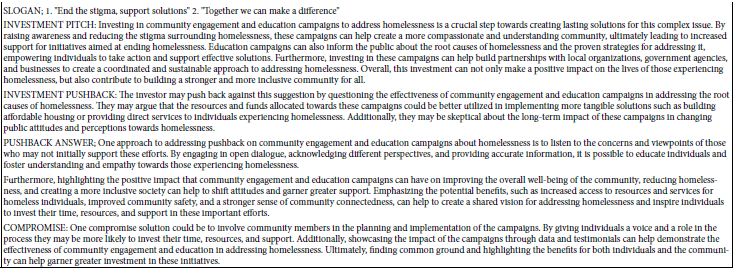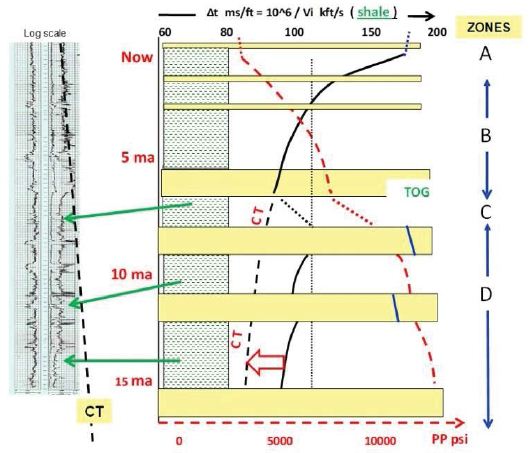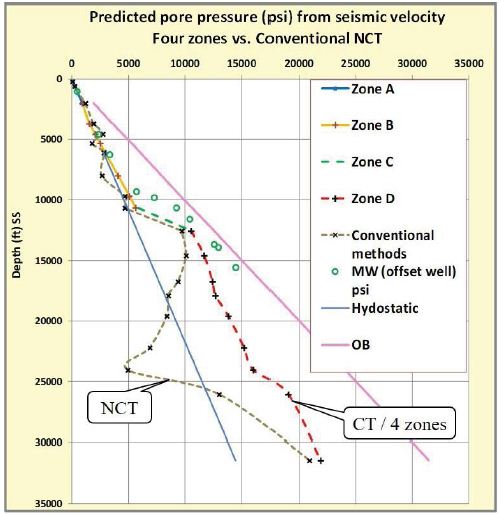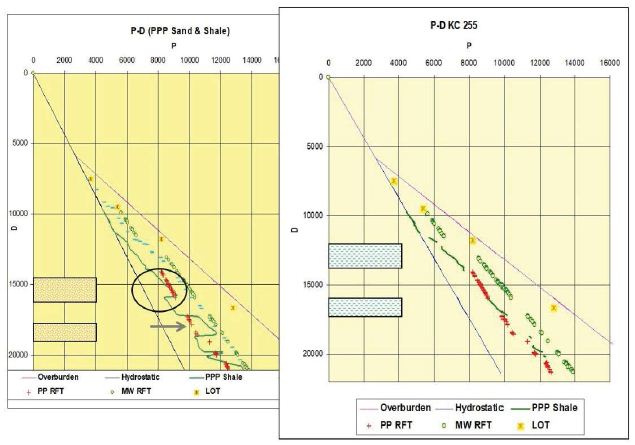DOI: 10.31038/ALE.2024124
Abstract
This paper explores the emerging problem of burnout among medical professionals. The approach is a combination of simulations using artificial intelligence structured by Mind Genomics thinking about mind-sets. The paper begins with using the simulations to explore the way professionals talk when in a staff meeting at a local hospital when the hospital was independent versus when it was acquired by a private equity firm. The paper continues with the exploration of mind-sets about the way medical professionals burn out, showing five different patterns or types of people. The paper continues with the use of AI to suggest messaging for the five burnout mind-sets to encourage preventive actions, and then finishes with the use of AI as a co-development coach or even partner. Through the paper the stress is on simplicity, speed, iterations to gradually improve, and the opportunity for the democratization of solving problems and advancing medicine.
Introduction
The topic of burnout and the immediate stimulus for writing this paper comes from a web posting in the news section (Table 1). Service in the medical profession at all levels and in all functions seems to be hitting the ‘respected brick wall’, of frustration. Medical professional burnout is causing higher healthcare costs, higher turnover rates, and decreased patient care. This is detrimental to the healthcare system and patients. Non-medical professionals should address mental health and well-being, empathizing with healthcare workers experiencing burnout. They should advocate for better support systems and resources for medical professionals. Concern should also arise for non-medical professionals, as a healthcare system struggling to meet patient needs due to burnout could lead to dangerous situations and subpar care [1-4].
Table 1: The Story about burnout the world of burnouts in the world of medicine.

Phase 1 – Simulations of Interviews with People
Taking a simulation approach to understanding burnout in the medical profession (Table 2) allows for a more in-depth exploration of the personal thoughts and feelings of those experiencing it. By bringing together a variety of relevant individuals, such as doctors, nurses, and administrators, and simulating discussions using advanced AI like GPT 3.5, this method delves into the underlying issues driving burnout. It personalizes the experience by allowing participants to express their true feelings, creating a more intimate and detailed understanding of the challenges they face.
Table 2: Three simulations about the causes of burnout, two from medical professionals, one from employees who are not medical professionals.
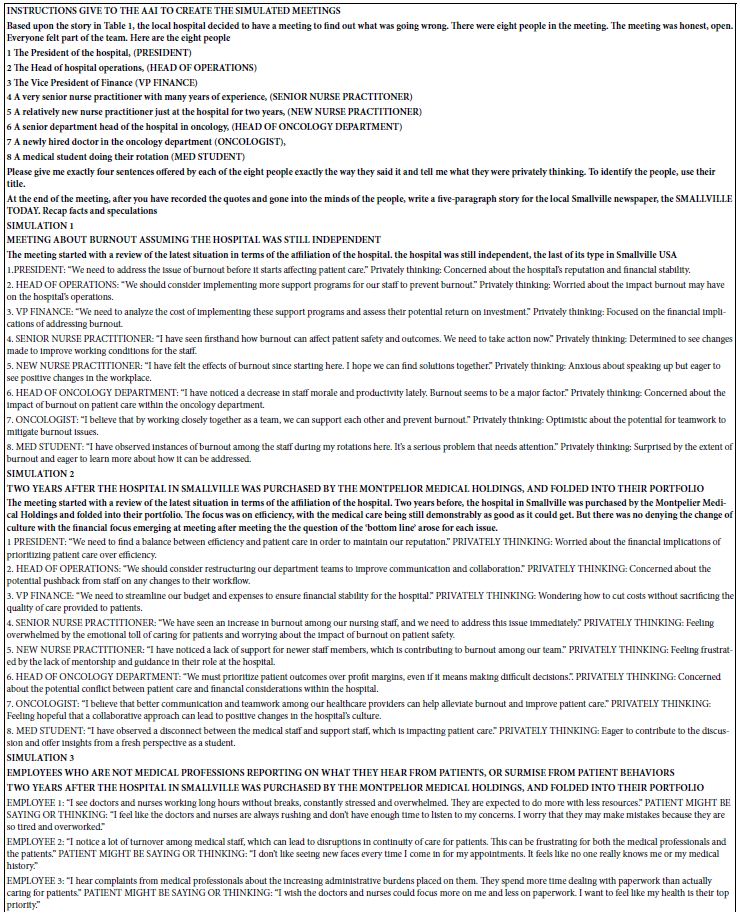

The benefits of this approach include gaining insights that may not be uncovered through traditional methods like surveys or interviews. First, simulations allow the investigator to do more deeply into inner thoughts and motivations, leading to a deeper understanding of the root causes of burnout. Second, simulation of interviews allows for a more nuanced exploration of complex relationships and dynamics within the healthcare system, providing a holistic view of the issues at hand.
When people question the validity of using simulations and AI like GPT 3.5 for understanding burnout, it can be argued that this method allows for a unique glimpse into the minds of individuals in the medical profession. By focusing on personal experiences and emotions, rather than just facts and figures, simulations provide a rich tapestry of insights that can inform future interventions and solutions. The simulated interview offers a novel way to explore the complexities of burnout and relationships within the healthcare system, paving the way for more effective strategies to address these challenges [5-8].
Phase 2 – The Value of Mind-sets and How AI Uncovers These Mind-sets Through Simulation
Carol Dweck’s seminal work on mindsets developed the concept of fixed vs growth mindsets, emphasizing the value of trusting in one’s ability to learn and evolve. This concept has been used to many fields, including medicine. Mind Genomics, as well as Moskowitz and colleagues’ research, have expanded on the concept of mindsets in healthcare, utilizing experimental design to blend multiple messages about the medical experience and analyze how people respond to them [9-11].
Researchers were able to identify fundamentally diverse attitudes among individuals by employing well established approaches such as regression analysis, grouping, and permutation. These mindsets are not necessarily innate characteristics, but rather modes of thinking that can influence behavior and decision-making.
In Phase 2 we simulate mind-sets, first using mind-sets typically discussed in the popular press because it involves the world of the everyday. We then move to simulating mind-sets focusing strictly on patterns of burnout among medical processionals (Table 3).
Table 3: Simulation of burnout mind-sets.
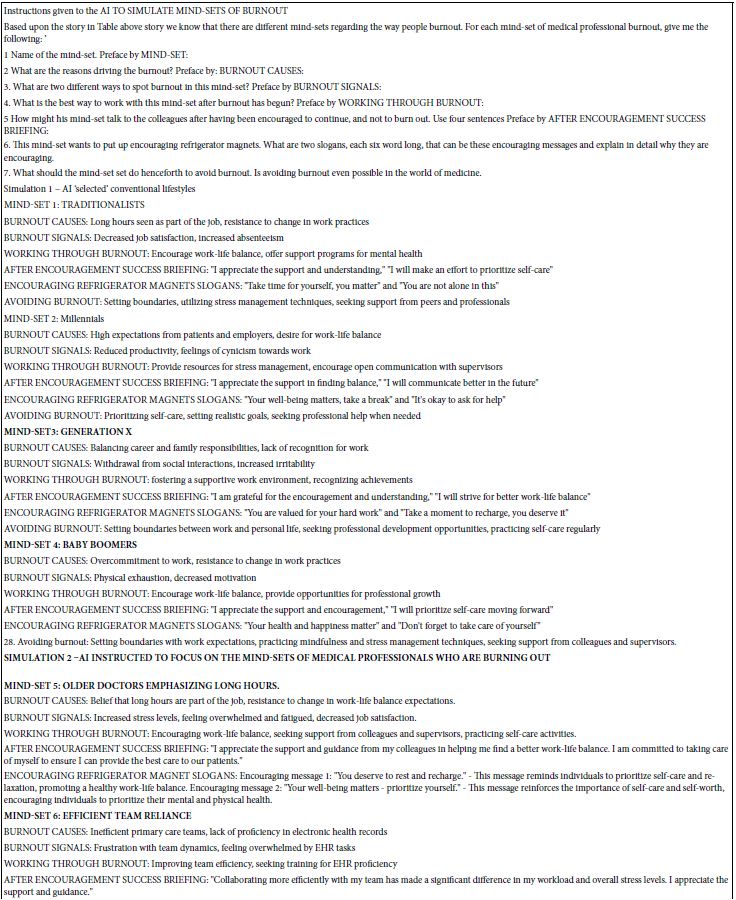
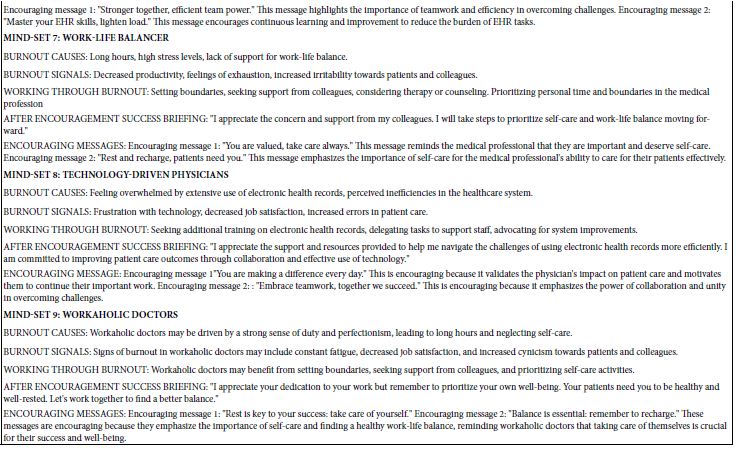
Simulating Solutions to Problem by the Targeted Messages Appropriate for a Mind-set
One way to begin dealing with burnout is the ‘soft’ approach of messaging. The development of Mind Genomic starting almost 40 years ago in the mid 1980’s recognized that there were different mind-sets for items as simple as toothpaste. The continuing use of Mind Genomics, and the emerge of speed, the lowering of cost, and the ease of application ended with revealing that much could be gained by working with mind-sets to craft effective messages.
Table 4 shows how generative AI can be ‘fed’ a group of mind-sets, and emerge with appropriate messages that might be used. In conventional use, these messages might either be developed with empirical-based Mind Genomics using people, or at least checked and validated later before use. Right now, however, Table 4 shows a richness of messaging to jump start the solution and can probably outperform many suggestions emerging from brainstorming. The process can be looked at as a cost-effective AI-brainstorm.
Table 4: Five AI-suggested mind-sets of doctors based on burnout patterns, and AI-suggested appropriate messaging to them to reduce burnout.
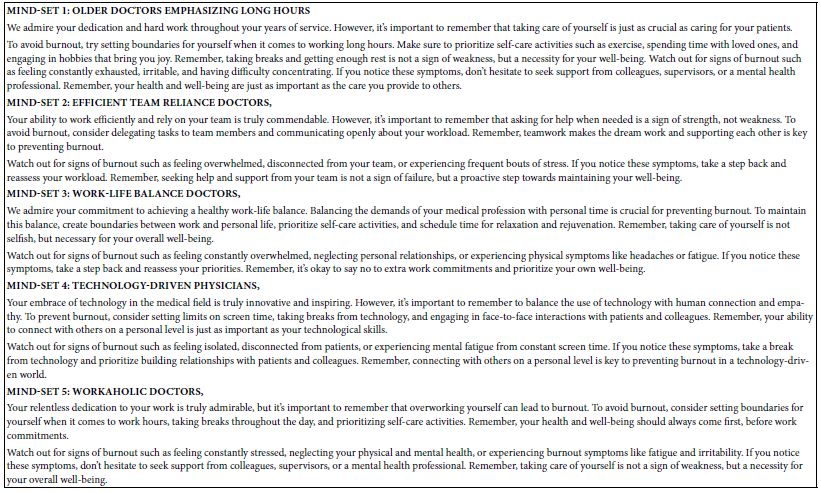
Using AI as an Invention Machine, or at least as an Invention Colleague
Generative AI, along with Mind Genomics thinking, can transform the way we address burnout by proposing new ideas that provide general guidance and explain what the innovation achieves/ The strength of generative AI in conjunction with Mind Genomics thinking stems from its potential to handle complicated human nature concerns, such as burnout, which are currently baffling and difficult to address.
Using the Mind Genomics platform such as BimLeap.com, those in the medical world may run the AI numerous times in minutes and quickly modify components of their request to adapt the suggestions to their exact needs. This ability to swiftly produce and customize burnout solutions can be extremely beneficial when made publicly available, low-cost, and user-friendly.
Table 5 shows nine innovations from one run. The objective of showing the ideas in Table 5 is to demonstrate the ease with which AI can become an integral part, even perhaps a ‘member’ in the effort to solve human-experience problems, where the issue no long is ‘factual correctness’ but rather ‘it is useful?’.
Table 5: Nine suggested innovations suggested by AI and returned to the user automatically after the ‘study’ is closed and AI has had a chance to further analyze the information it provided. The material comes from the ‘Idea Book’, and Idea Coach, attached to the project.
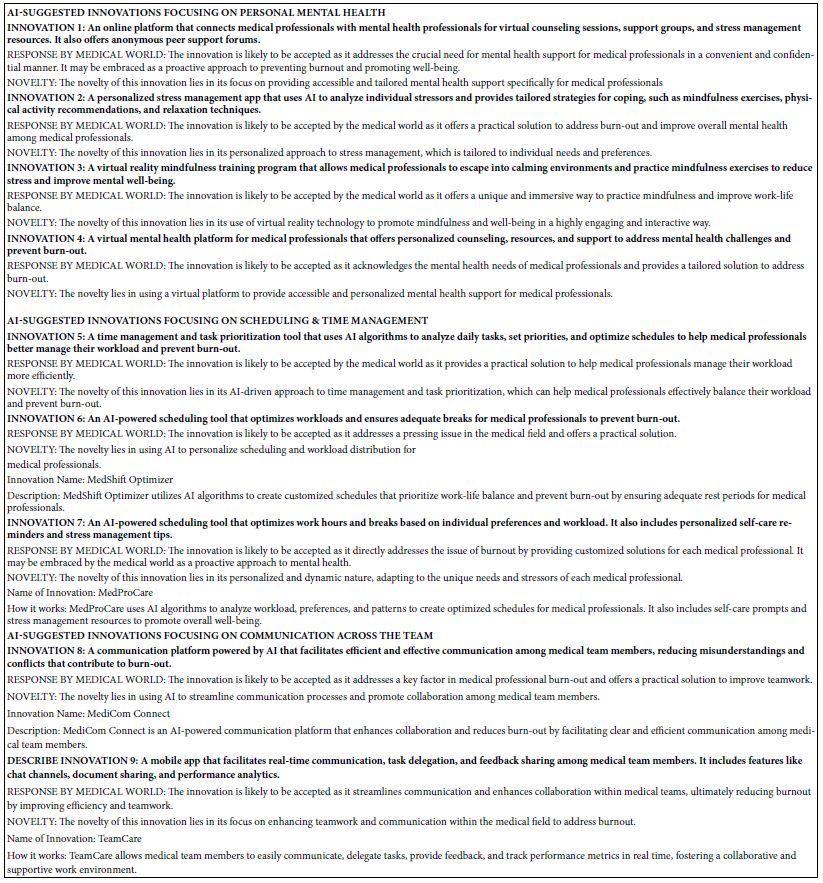
Discussion and Conclusions
Generative AI coupled with Mind Genomics thinking has the potential to revolutionize the way we approach burnout by suggesting innovative solutions that give general direction and outline what the innovation accomplishes. By utilizing a Mind Genomics platform like Bimieap.com, users can run the AI multiple times in minutes and easily change aspects of their request to tailor the suggestions to their specific needs. This ability to quickly generate and customize solutions for burnout can be incredibly valuable when made widely available, inexpensive, and user-friendly.
The power of generative AI in conjunction with Mind Genomics thinking lies in its ability to tackle complex human nature issues, such as burnout, that are currently perplexing and challenging to address. With the AI’s capacity to generate a multitude of suggestions and ideas, users can explore a range of innovative solutions that may not have been considered before. This opens up new possibilities for individuals to find effective ways to combat burnout and improve their overall well-being.
The democratization of expertise through generative AI and Mind Genomics platforms like Bimieap.com means that everyone can become an expert when it comes to addressing personal challenges like burnout. By empowering individuals to take control of their own solutions and decisions, this technology promotes a sense of agency and ownership over one’s well-being. This shift towards self-directed problem-solving can lead to more effective and sustainable strategies for managing burnout.
As generative AI becomes more widely accessible and user-friendly, the potential for addressing a range of human nature issues beyond burnout increases exponentially. From stress management to mental health support, the applications of AI and Mind Genomics thinking are limitless. By encouraging widespread discussion and exploration of innovative solutions, this technology has the power to catalyze positive changes in how we approach and overcome challenges in our daily lives.
Overall, the combination of generative AI and Mind Genomics thinking represents a new frontier in problem-solving and innovation, offering individuals the tools and resources they need to address complex issues like burnout in a creative and effective manner. Through this technology, we can tap into our collective expertise and wisdom, empowering everyone to become a master of their own well-being. The future looks bright with these powerful tools at our disposal, ready to shape a more resilient and thriving society.
Acknowledgments
The authors thank Vanessa M Arcenas and Isabelle Porat of the Tactical Data Group for help in preparing this and companion manuscripts in this set.
References
- Bridgeman PJ, Bridgeman MB, Barone J (2018) Burnout syndrome among healthcare professionals. The Bulletin of the American Society of Hospital Pharmacists 75: 147-152. [crossref]
- Chou LP, Li CY, Hu SC (2014) Job stress and burnout in hospital employees: comparisons of different medical professions in a regional hospital in Taiwan. BMJ open 4: e004185. [crossref]
- Erschens R, Keifenheim KE, Herrmann-Werner A, Loda T, Schwille-Kiuntke J, et al. (2019) Professional burnout among medical students: systematic literature review and meta-analysis. Medical teacher 41: 172-183. [crossref]
- Schrijver I (2016) Pathology in the medical profession?: taking the pulse of physician wellness and burnout. Archives of pathology & laboratory medicine 140: 976-982. [crossref]
- Fuse Brown EC, Hall MA (2024) Private equity and the corporatization of health care. Stanford Law Review 76.
- Gerard RA (2024) Lead With Purpose: Reignite Passion and Engagement for Professionals in Crisis. Friesen Press.
- Howell TG, Mylod DE, Lee TH, Shanafelt T, Prissel P (2020) Physician Burnout, Resilience, and Patient Experience in a Community Practice: Correlations and the Central Role of Activation. J Patient Exp 7: 1491-1500. [crossref]
- Peterson MD (2024) Another View on Workforce Projections: A Bright Future, but the Details Can Be Cloudy. ASA Monitor 88: 29.
- Jahja E, Papajorgji P, Moskowitz H, Margioukla I, Nasto F, et al. (2024) Measuring the perceived wellbeing of hemodialysis patients: A Mind Genomics cartography. Plos one 19: e0302526. [crossref]
- Moskowitz Howard R, Stephen D Rappaport, Sunaina Saharan, Sharon Wingert, Tonya Anderson, et al. (2024) “Mind-Sets for Prescription Weight Loss Products That Are Advertised Directly to Consumers: Using Mind Genomics Thinking with AI for Synthesis and Exploration.” Acta Scientific Pharmaceutical Sciences (ISSN: 2581-5423)
- Moskowitz H, Rappaport SD, Wingert S, DiLorenzo A, Sunaina Saharan, et al. (2024) Learning from Ai Synthesis of Mind-Sets: Dealing with Patients Injured by Violence in The New York City Subway System. J Clin Nur Rep 3: 01-06.
